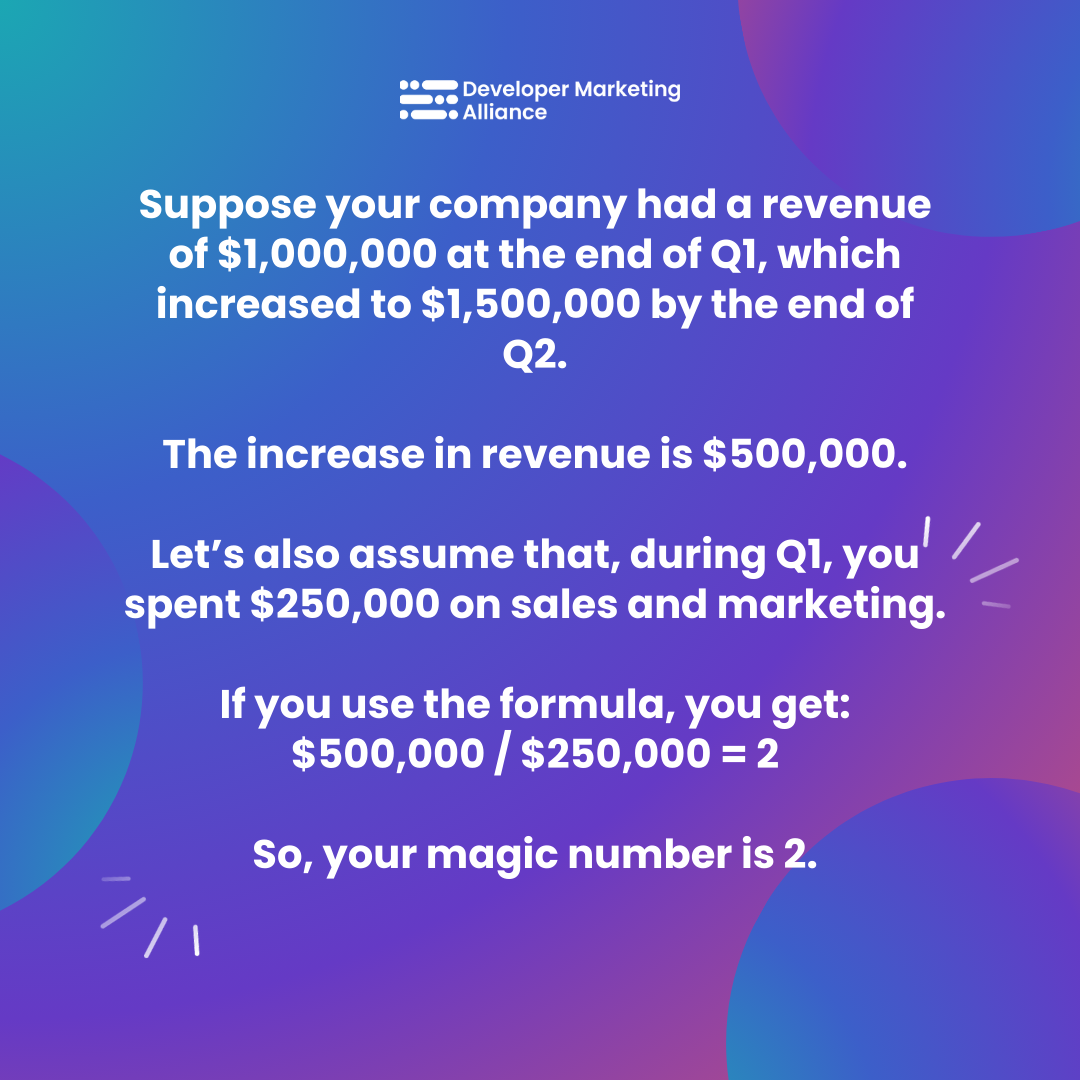Understanding just how well your sales and marketing are performing is crucial, which is where the SaaS magic number comes in.
This number can be used to analyze your growth strategies, helping you to make data-driven decisions and investments.
Whether you’re a seasoned marketer or just starting out, understanding this metric can give you powerful insights into your org’s growth and financial health.
But, if you’re unsure where to start and how to calculate this magic number, you’ve come to the right place—read on for everything you need to know about it.

What is the SaaS magic number?
The SaaS magic number is a metric (as well as formula) that analyzes just how efficient the spending of your company’s sales and marketing is.
In short, it measures how effectively you’re generating new revenue from these activities. Due to this, you can use this metric to evaluate whether you should increase, decrease, or maintain your current spending.
The metric is super useful for companies experiencing fast growth, since it can help them monitor their ROI.
How to calculate the magic number in SaaS?
To calculate this number using quarters, here’s what you need to know:
- Calculate the increase in ARR (annual recurring revenue) by subtracting the previous quarter’s revenue from the current quarter’s revenue.
- Then divide that by the previous quarter’s marketing and sales expenses.
Simply put, as a formula, you get:

You can also multiply by 4 to reflect an annualized rate.
Example
Let’s look at a made-up example that can help you to better understand how the formula works.
Let’s suppose your company had a revenue of $1,000,000 at the end of Q1, which increased to $1,500,000 by the end of Q2. The increase in revenue is, therefore, $500,000. Let’s also assume that, during Q1, you spent $250,000 on sales and marketing.
If you use the formula, you get: $500,000 / $250,000 = 2
So, your magic number is 2.
But how do you interpret the SaaS magic number?
That’s all well and good, but what does the number mean? And what if you actually have a lower number?
Your results can help you to identify whether you’re on the right track with your sales and marketing strategies, or if you have to make changes.
- Magic number >1.0: This indicates your company is very efficient at converting sales and marketing spend into ARR. you might even consider calling up your spend.
- Magic number between 0.75 and 1.0: This suggests reasonable efficiency in your sales and marketing efforts, and the goal should be to maintain and optimize your current strategies.
- Magic number between 0.5 and 0.75: This number signifies that your sales and marketing efforts need improving, as your spending isn’t as efficient as it could be. Focus on reviewing and adjusting your strategies.
- Magic number <0.5: This shows a poor return on sales and marketing spend. It’s important you evaluate your strategies and focus on improving them, as well as changing tack if need be.
In short
There are many SaaS metrics that you should track in order to measure the success of your marketing and sales efforts, such as the average customer lifetime value and the churn rate. Of course, it’s important to choose metrics that are actually relevant to you—so, narrow down the ones that are applicable to your specific business case.
The SaaS magic number may by one such metric. We hope this helped you learn how to calculate it and apply in your company.

FAQs
What are the SaaS magic number benchmarks?
- Magic number >1.0
- Magic number between 0.75 and 1.0
- Magic number between 0.5 and 0.75
- Magic number <0.5
What is a good SaaS magic number?
Anything above 0.75 as your magic number is already good, with 1 and above being excellent. If your results are 0.5 or lower, you may want to revise your strategy and make changes in order to boost the efficiency of your sales and marketing tactics.
What’s included in ARR?
Typically, you’ll include the following when calculating your ARR:
- Subscription fees
- Revenue from recurring contracts
- Renewals
- Upsells and cross-sells
- Discounts and promotions
You’d exclude things like one-time fees and products that are not a subscription.
How to improve my SaaS magic number?
There are many different ways to improve your magic number in SaaS, including:
- Optimizing your sales and marketing by targeting the right audience and having a great unique value proposition.
- Increasing customer retention by improving the onboarding experience, providing great customer support, and engaging with developers often.
- Increasing your customer lifetime value by upselling and cross-selling, as well as creating add-ons to your products and adjusting your SaaS pricing strategy as needed.
How developers find, evaluate, and take action on your product does not follow the traditional marketing funnel.
Led by Chris Riley, the Senior Manager of Developer Relations at HubSpot, this course has everything you need to create powerful strategies that resonate with your audience.







